These six caravans are the ultimate summer accessory. Check out how these owners transformed the interiors below
1. Daisy
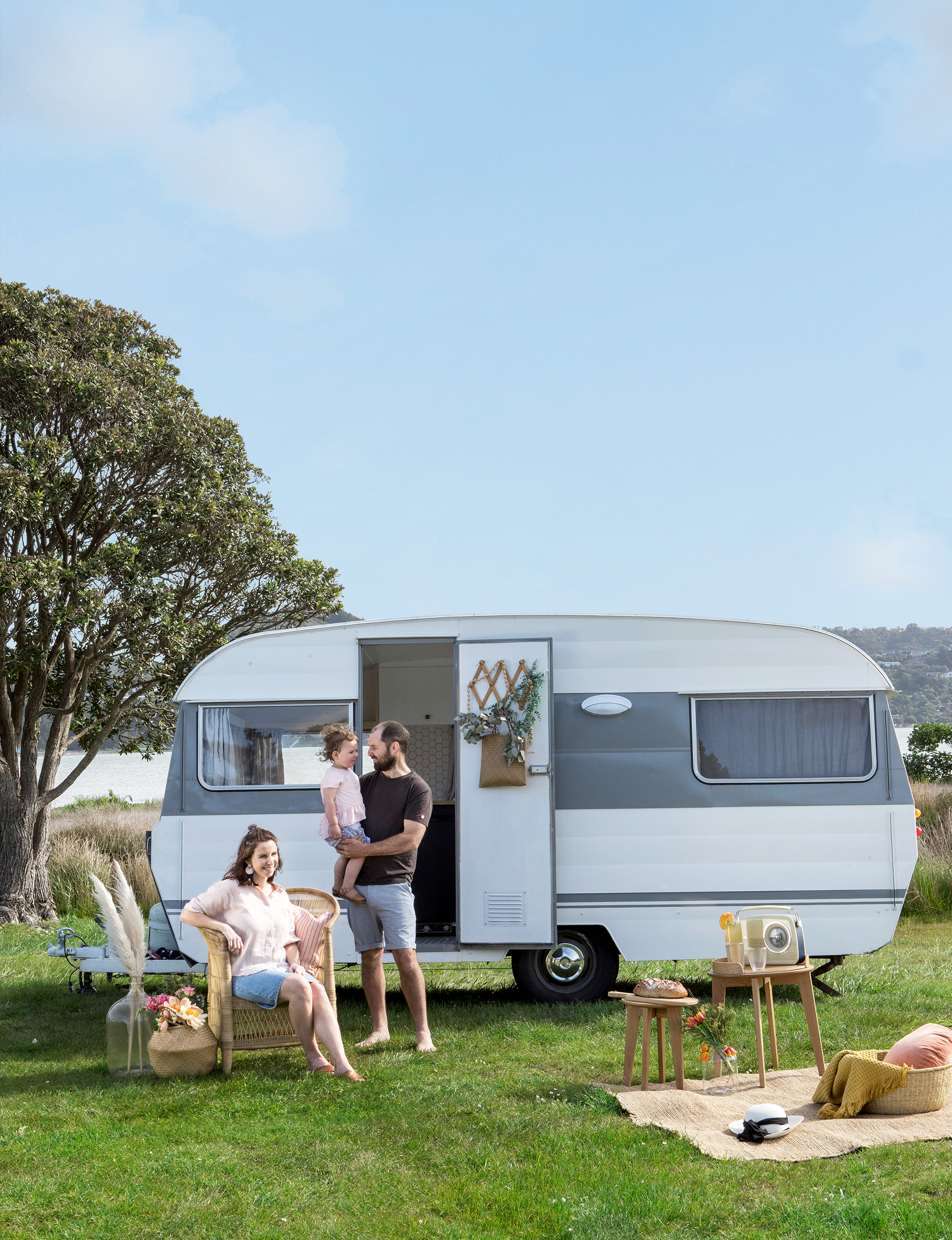
A whole lot of love went into the restoration of this once-rusty caravan. Now ‘Daisy’ is the perfect mobile holiday home for Lara and Ben Maher, and their two kids Charlotte and Ollie, who have kitted it out for a lifetime of adventure.
Tell us about the buying process.
We bought Daisy off Trade Me. The process was pretty straightforward, although we did have to put it on a tow truck as it had a flat tyre and wasn’t anywhere near roadworthy. We had a nervous drive following it home.
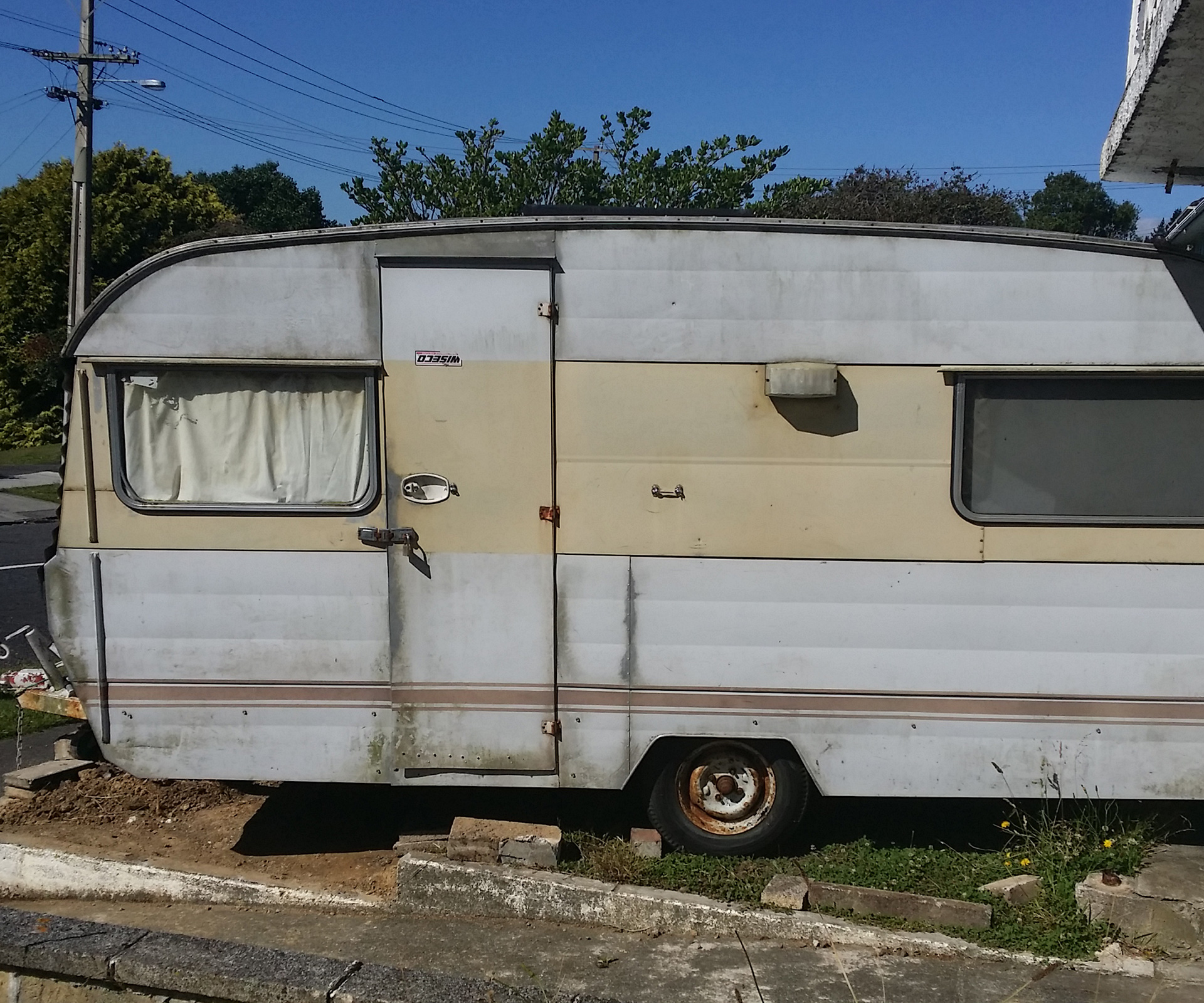
What was the caravan like when you bought it?
It was in a pretty bad way. It was unlicensed and had not had a WOF since 1992. It was completely gutted, the wiring was shot, the carpet was smelly, the windows were broken, the paint job was peeling and mouldy. It needed a lot of work!
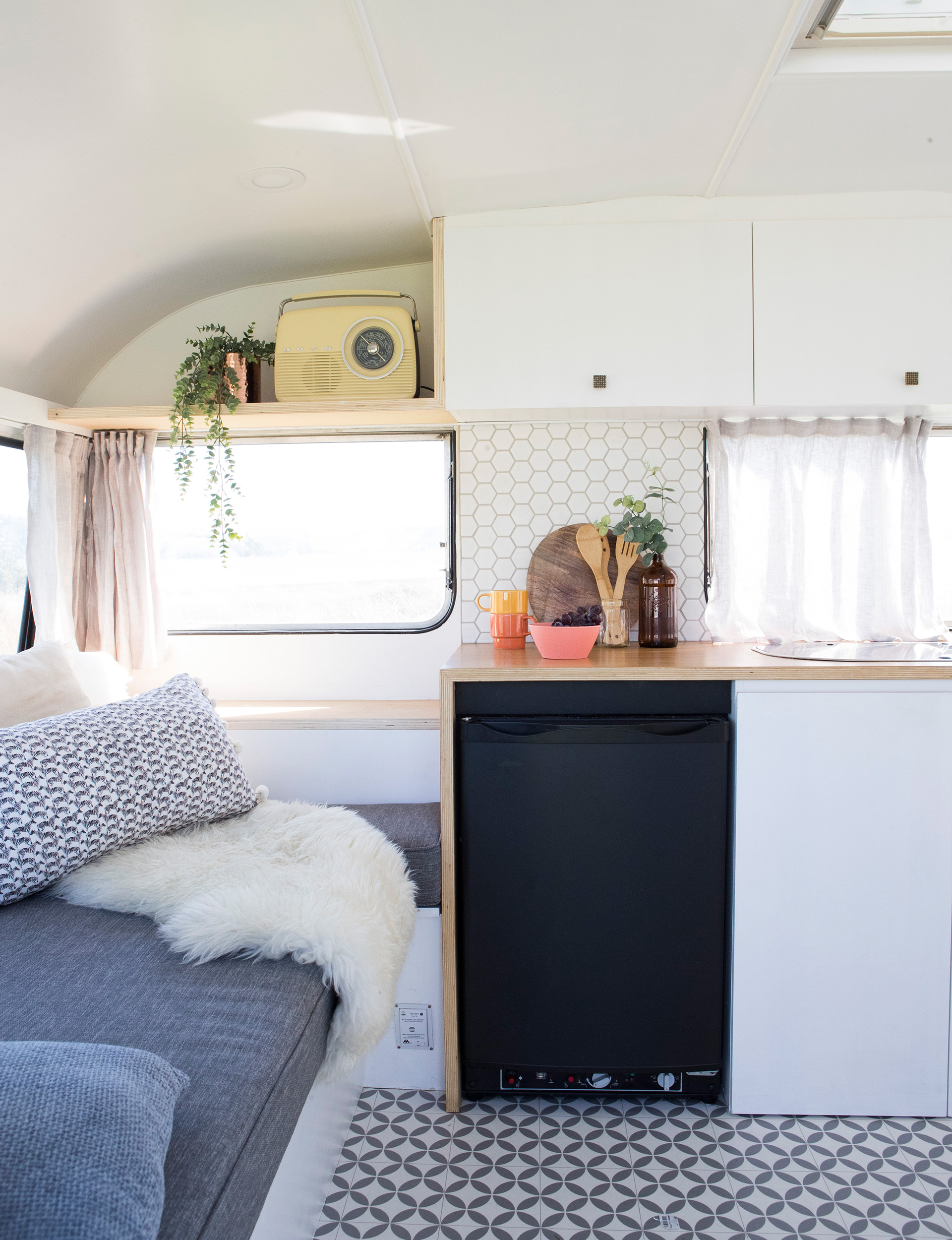
What exactly did you do?
Basically everything needed doing! We initially spent weeks scraping wallpaper glue off the walls – that was the worst job. From there, we built all the internal joinery, replaced the broken window with Perspex (saved us the cost of a glazier), added wiring and plumbing, removed rust from the axle, painted it inside and out, installed appliances and a solar panel, and fitted soft furnishings – not to mention all those extra small fiddly jobs.
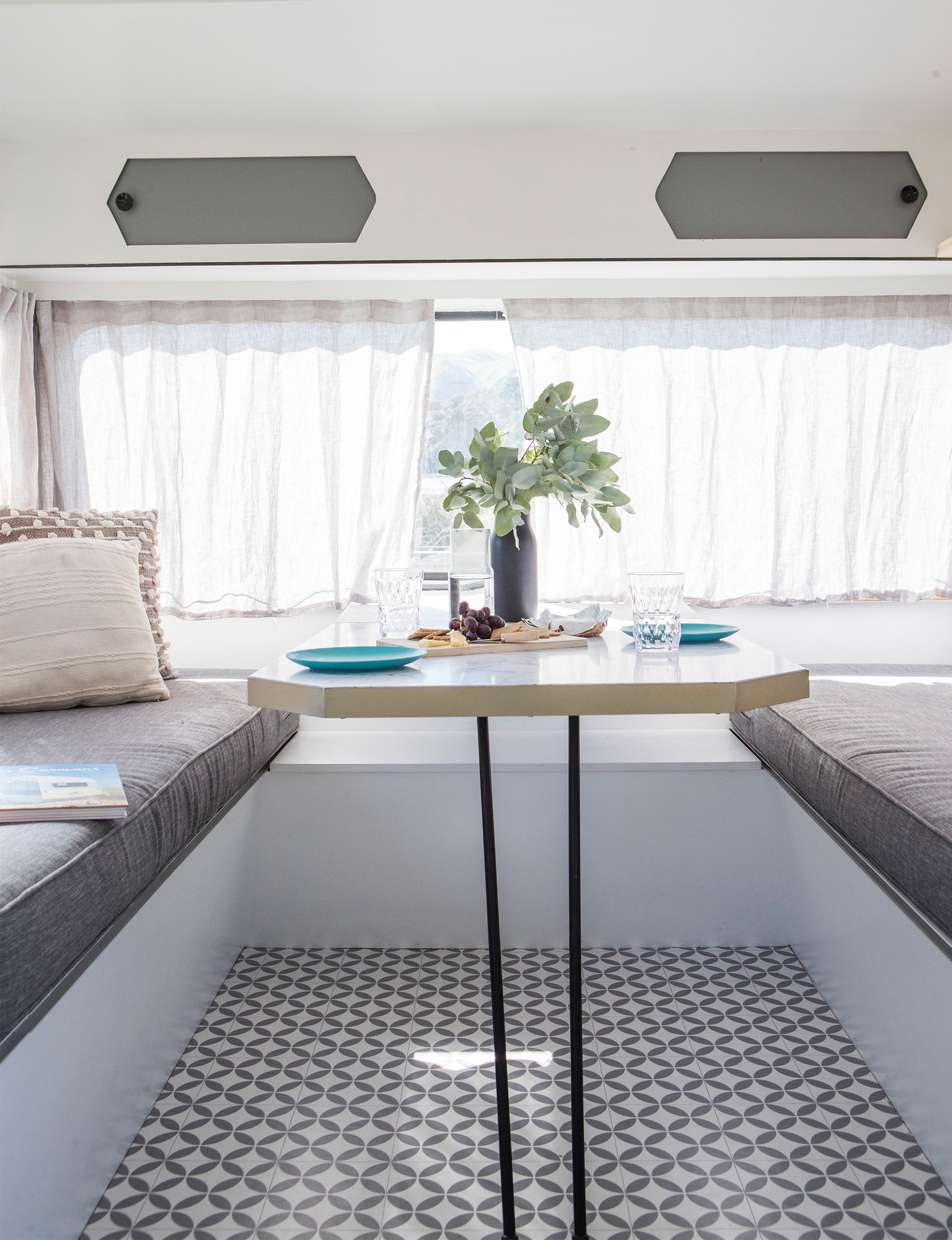
What was your inspiration for the interior?
As well as wanting it to be relaxing and cosy, getting the layout right was important as we wanted it to feel spacious inside. Key features included creating a daybed at the front instead of bunks and having open shelving rather than full cupboards above. We also wanted it to be really practical and efficient – the three-way fridge (which works on gas, 230-volt and 12-volt power), solar panel and the ability to transform the seating into a full-sized bed all helped to achieve this. We have future-proofed it so the space will still work for us as our family grows.
2. Clyde
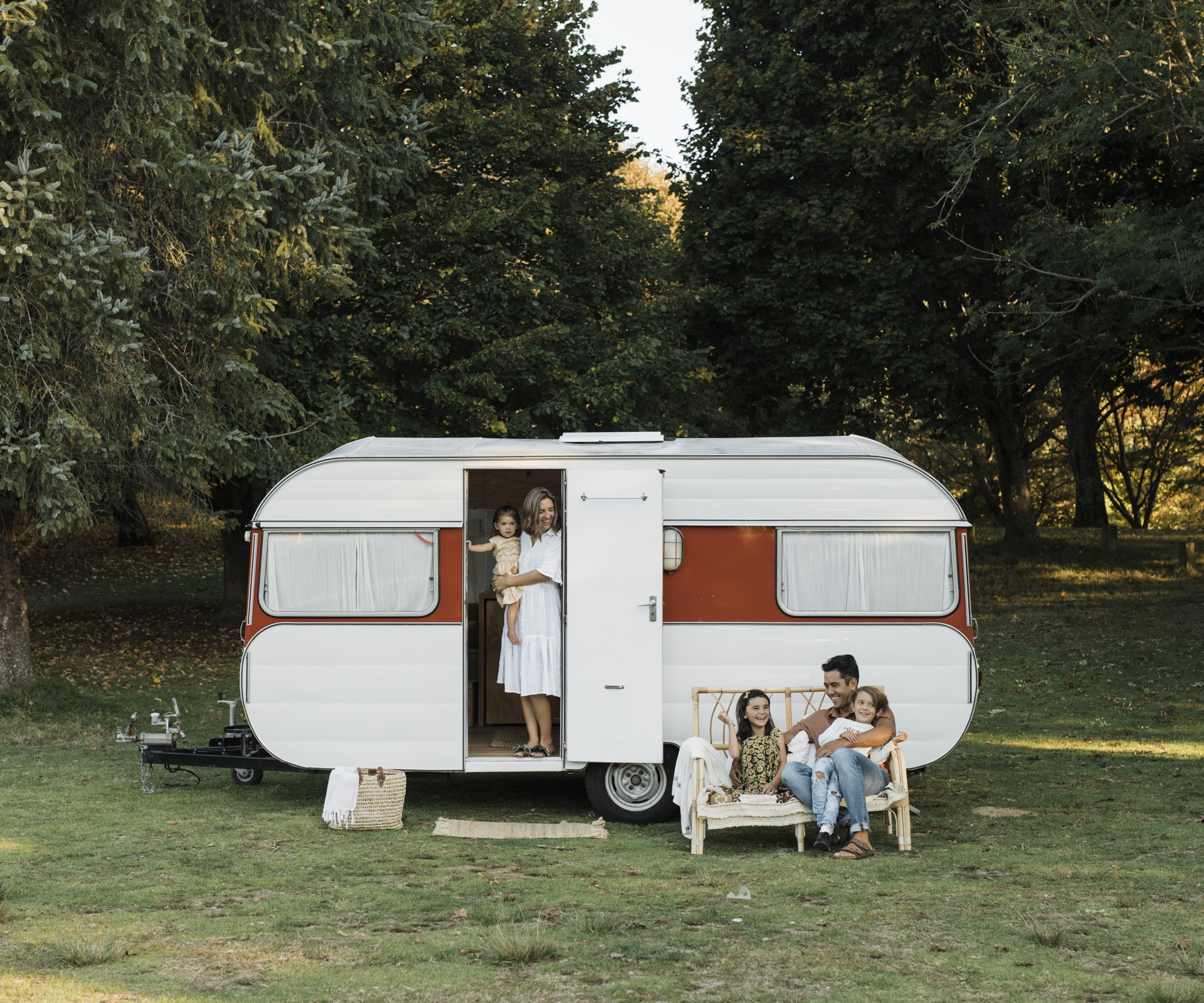
Trading their rain-soaked tent for an old-school caravan has been the ticket to holiday happiness and magical memories for Ants and Nicola Reweti and their children, Arlie, Jai and Mika.
How did you end up being caravan owners?
Ants: On Waitangi Weekend last year, we got flooded out of our tent at Sandspit Bay and had to evacuate at 10pm. We packed the ute and trailer in ankle-deep water and headed off for the six-hour drive home with everything soaking. That’s when we decided “no more tenting”. We borrowed a friend’s caravan to give it a taste and were hooked. It was so easy being able to throw our stuff in it and most things are in there already.
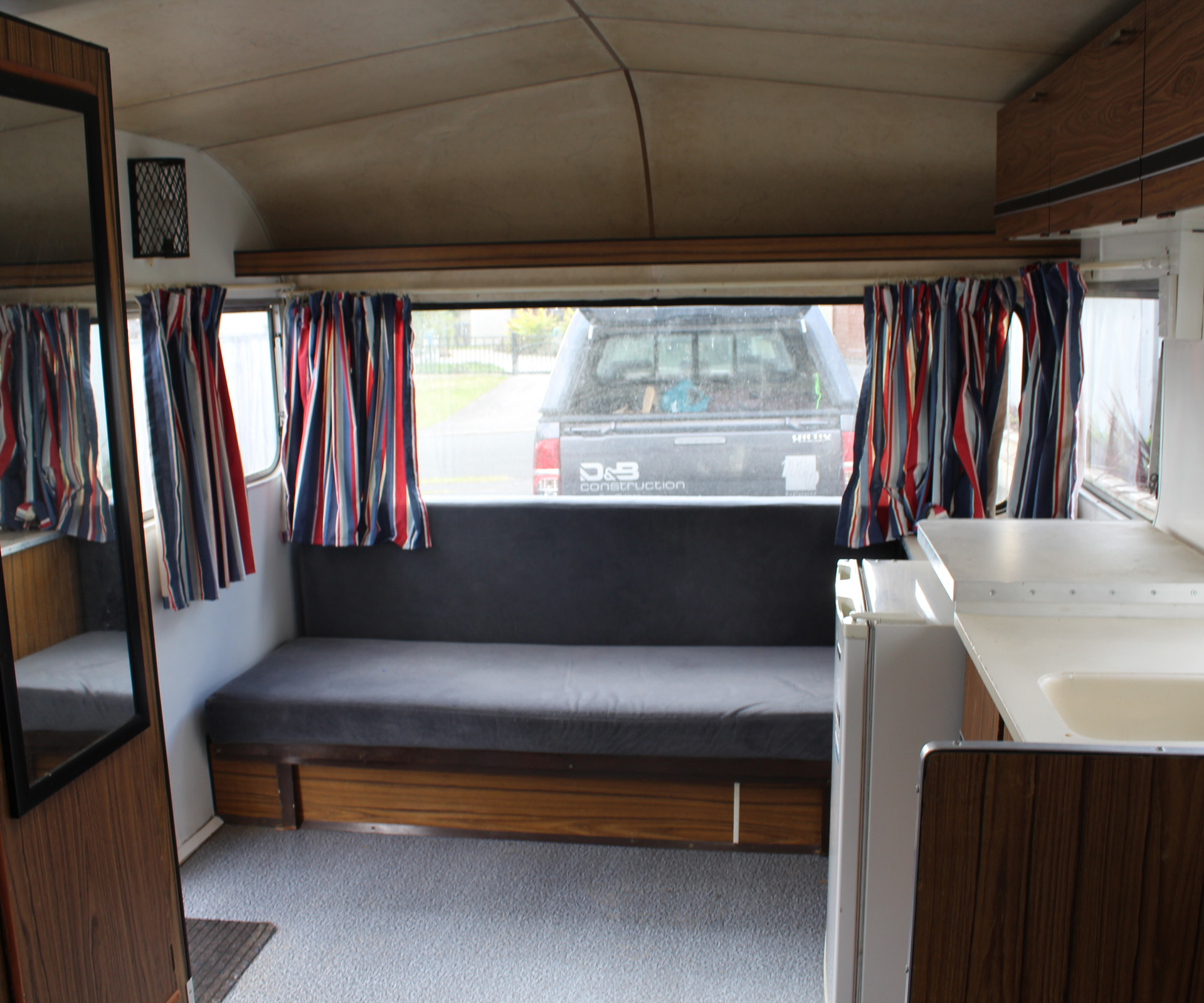
Interior before.
How much did you tackle yourselves?
All the ply detailing and cabinetry, painting, bed frames and flooring were done by Ants. I made the curtains, blinds and quilt cover, and upholstered the vertical sections in the seating area – the other part was left to the professionals.
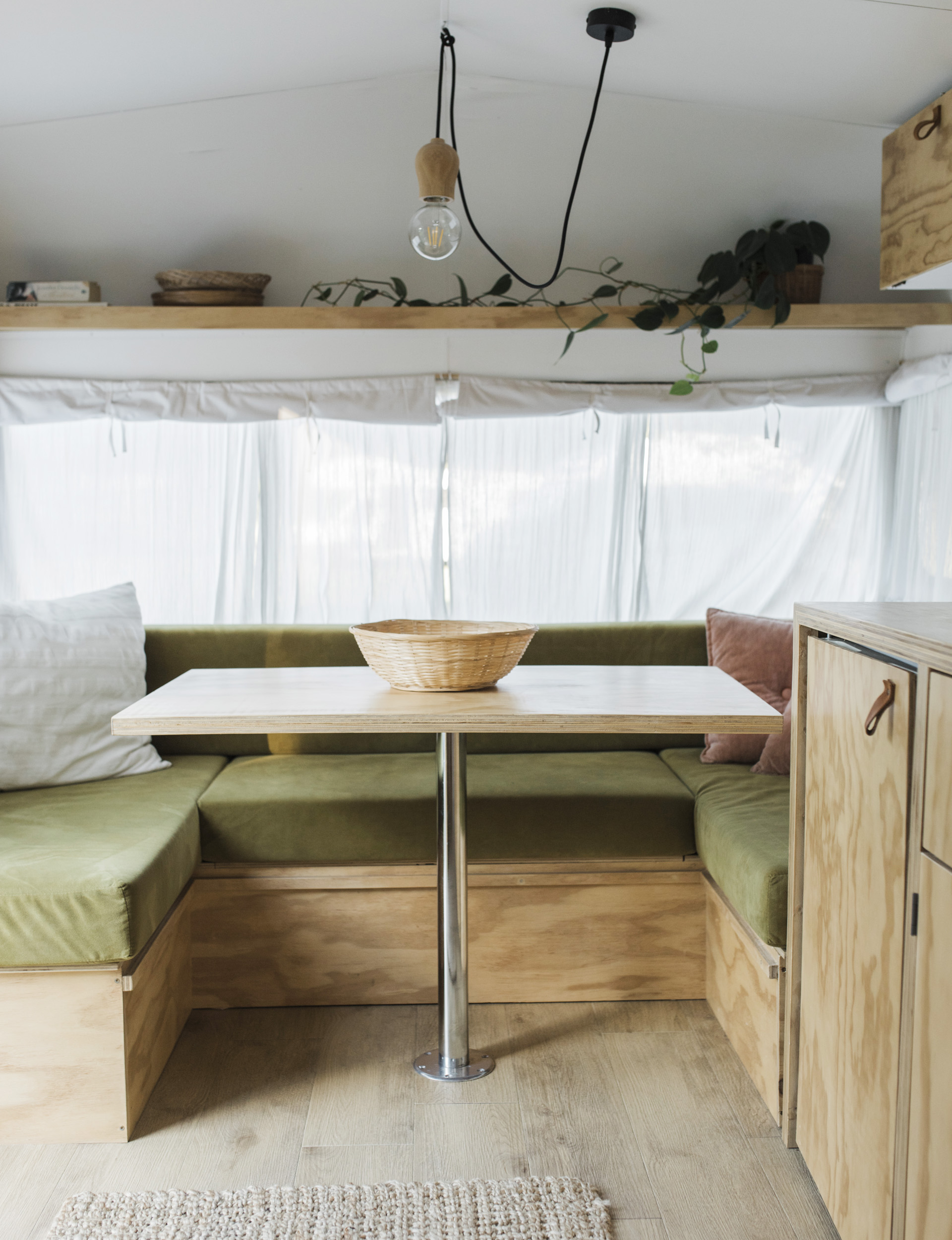
Interior after.
What was the inspiration for Clyde’s interior?
Nicola: A natural look with some retro touches. We didn’t want anything too clinical and it had to be sturdy enough to handle bumps. Things like the pillows, wooden bowls, towels and mugs all came from op-shops. I wanted things that wouldn’t break, aren’t plastic and would add to the theme. I love how our exposed-filament bulb lights and gold wall brackets go with the wood, olive green and cream fabric and the natural look of the caravan.
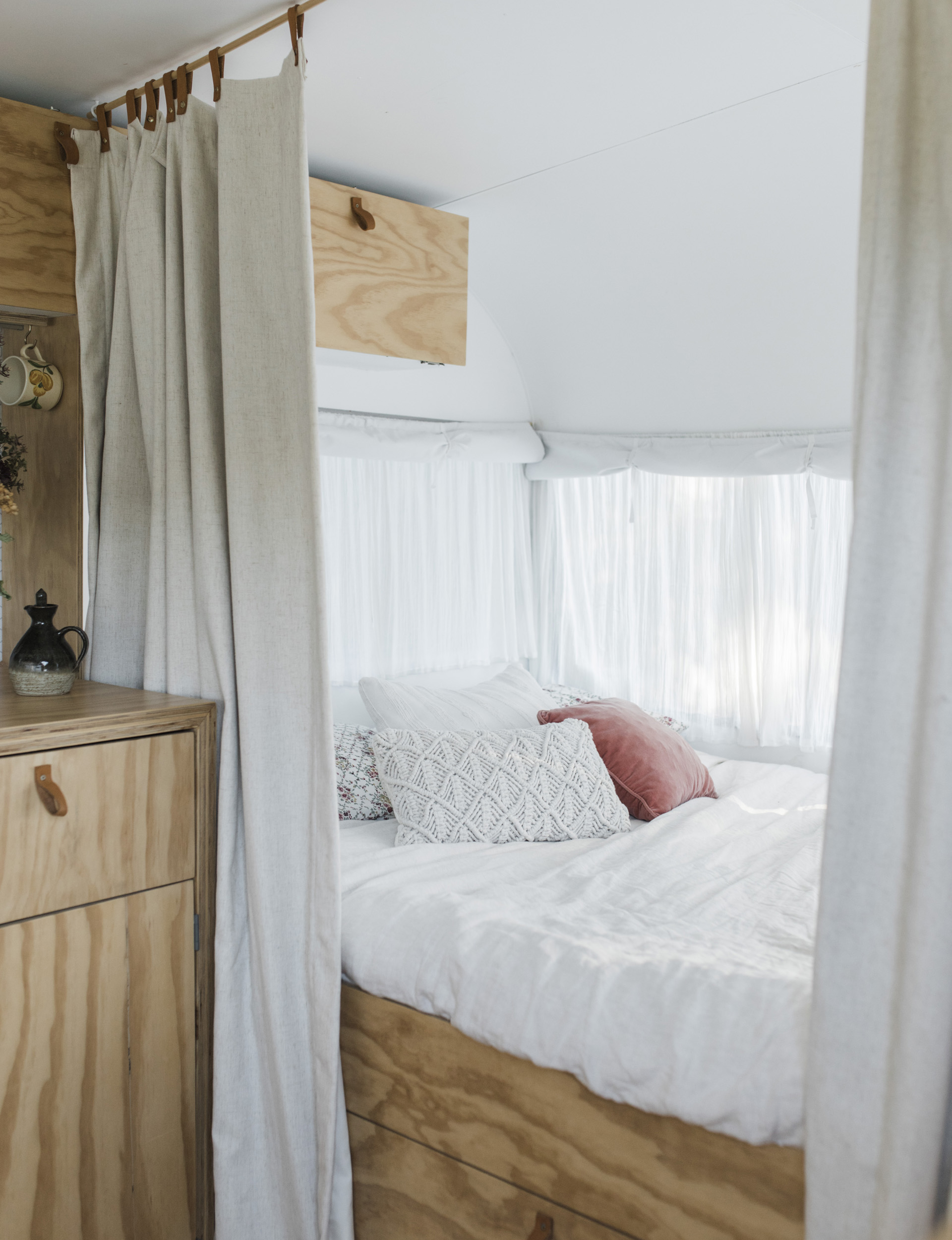
What do you enjoy most about caravan life?
It offers quality family time, is so much easier than tenting, and we don’t have to worry about the weather so much. It’s a relaxing way to get away and we pick places that aren’t so busy.
3. Neverland
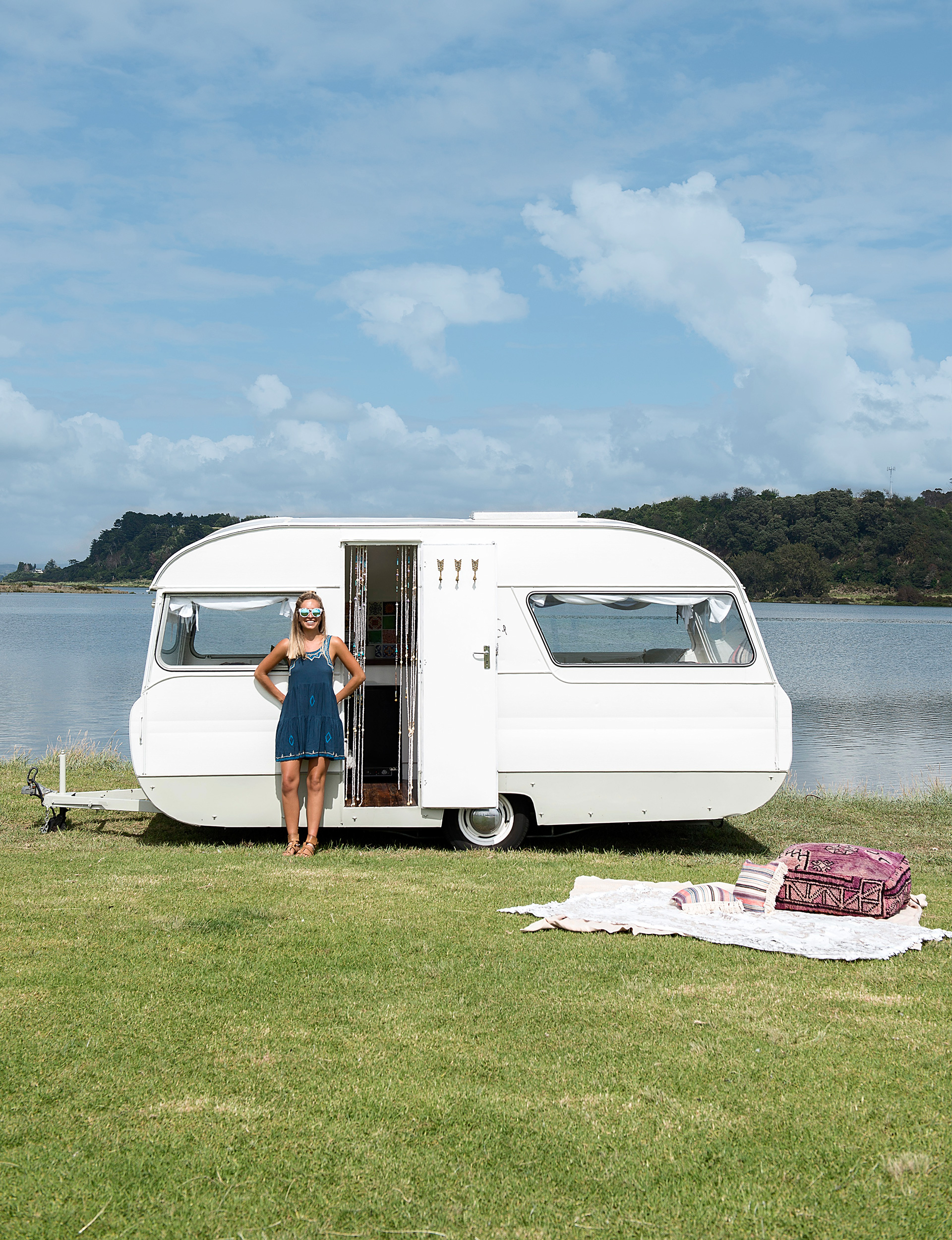
Buying a run-down caravan was a spontaneous decision for this Jade and her partner, but their belief in its potential has resulted in a magical home away from home.
What was the caravan like when you bought it?
It was usable but pretty grotty. It was painted maroon and cream, had ugly old cupboards painted maroon as well, and at one end there was a table with two couch-type seats on either side that weren’t at all comfy. The lino was stained, there were watermarks everywhere and quite a bit of hidden rot.
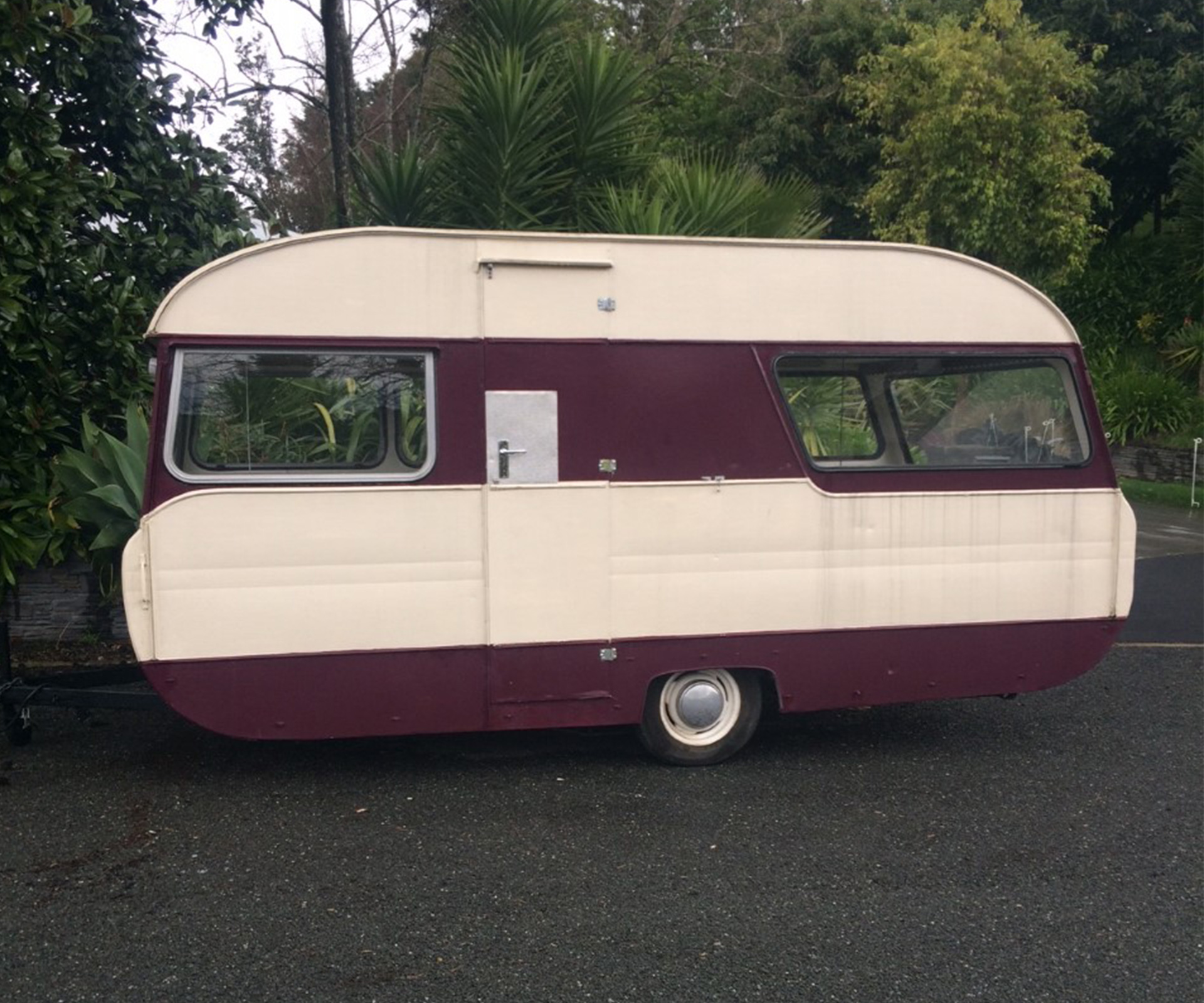
What else did you do to the interior?
As well as gutting the inside, we stripped the floor back to the timber. We then handed it over to The Caravan Doctor in Papamoa who put in all the new framework and cupboards, lights, batteries and solar panels. Once we got it back, we sanded and painted it, and polished the floor. The gas fitter installed the gas fridge and hob. Then I did all the fun decorating bits like the tiling. It took about six months.
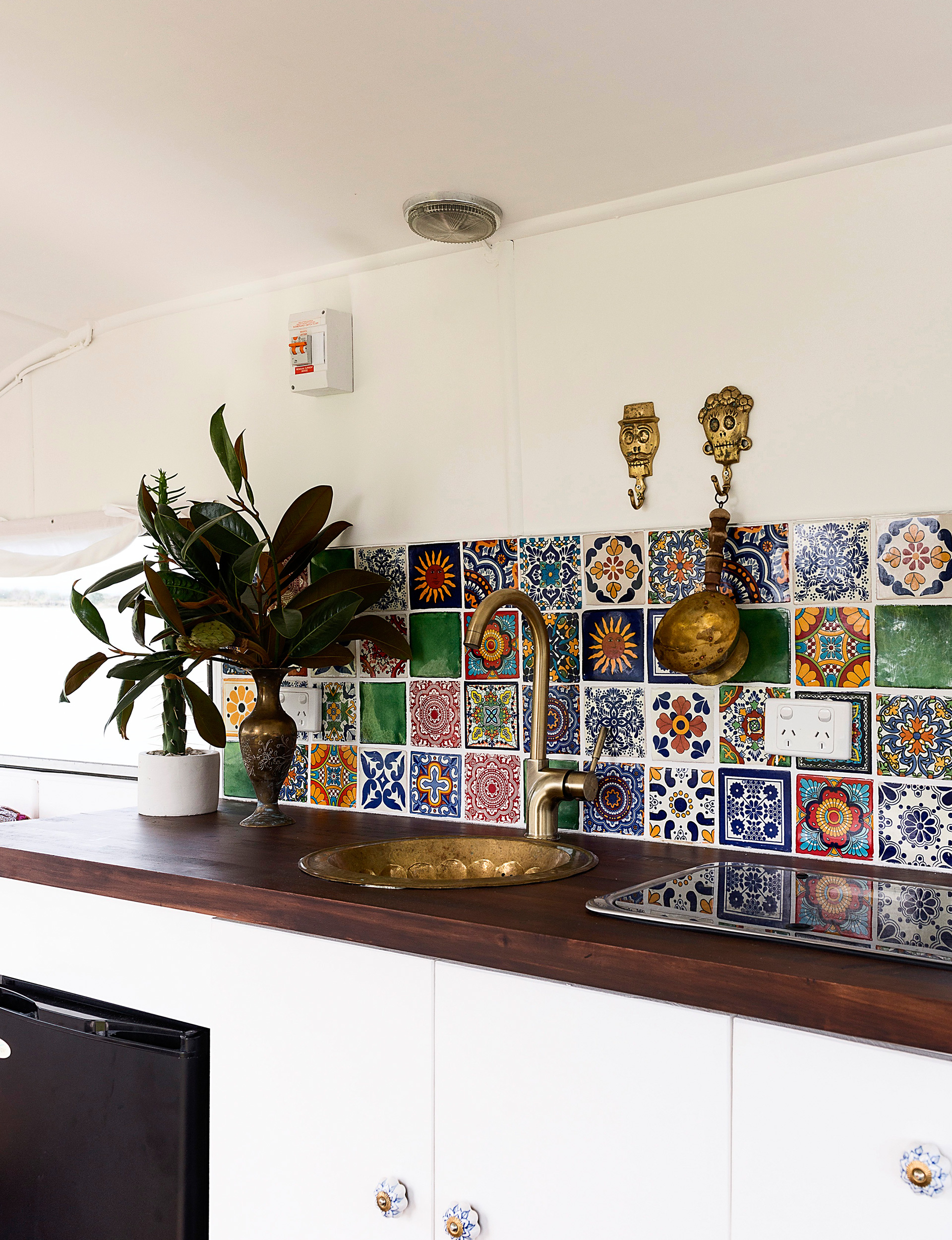
What was your inspiration for the styling?
I wanted it to be far from classic retro or vintage. The Mexican tiles and Moroccan lights were the first things I bought. I wanted it to be beautiful, comfortable and practical with fresh white walls and timber benchtops. We eat outside when we can, so I wasn’t worried about having a big dining table; instead we wanted an L-shaped couch that folds out into another double bed. And I found a beautiful coffee table that fits in perfectly – I just gave it a quick sand.
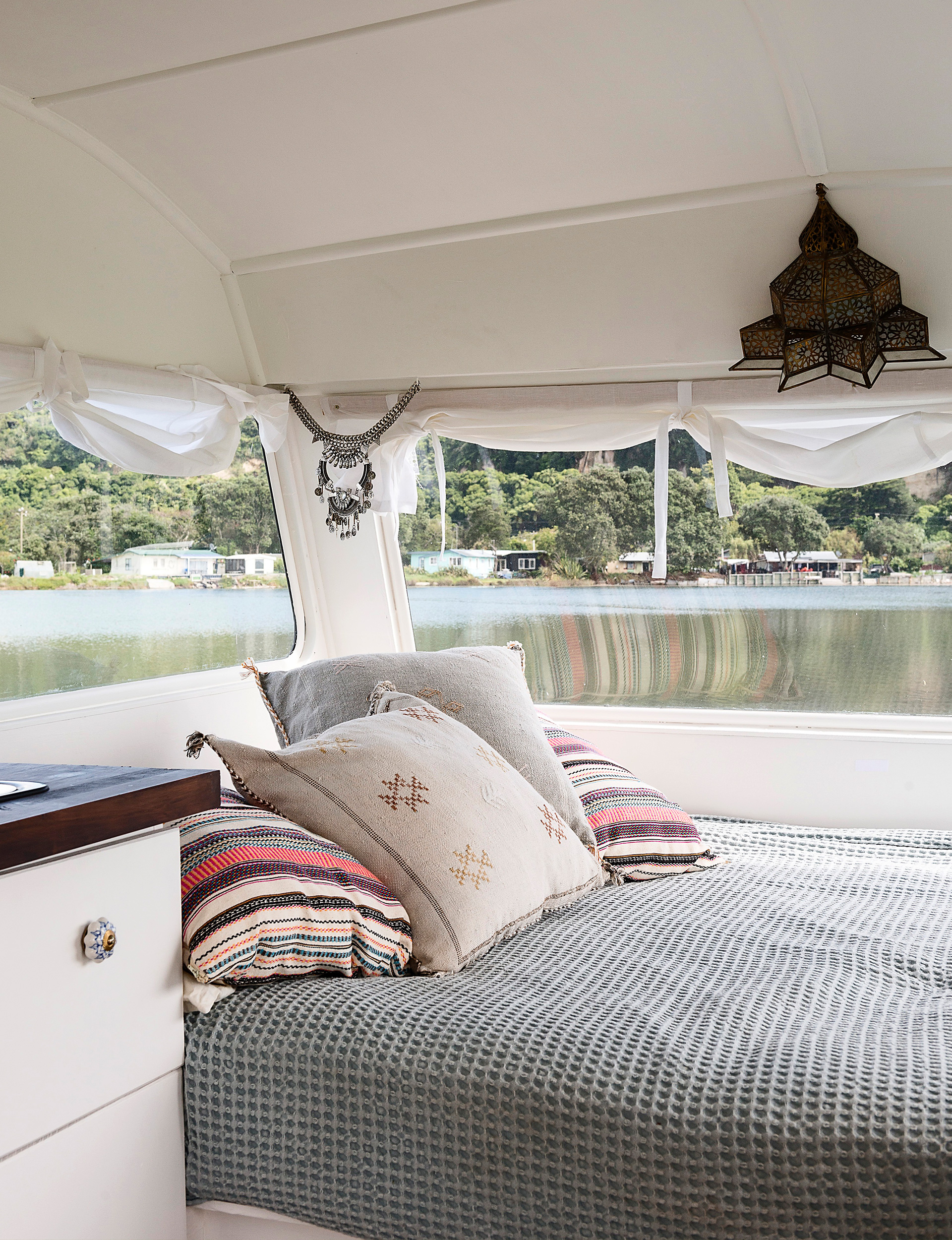
What was your budget – and did you stick to it?
We didn’t really have a budget as we weren’t too sure of what it would cost. All up, we spent about $25,000 including the purchase price.
4. Darcy
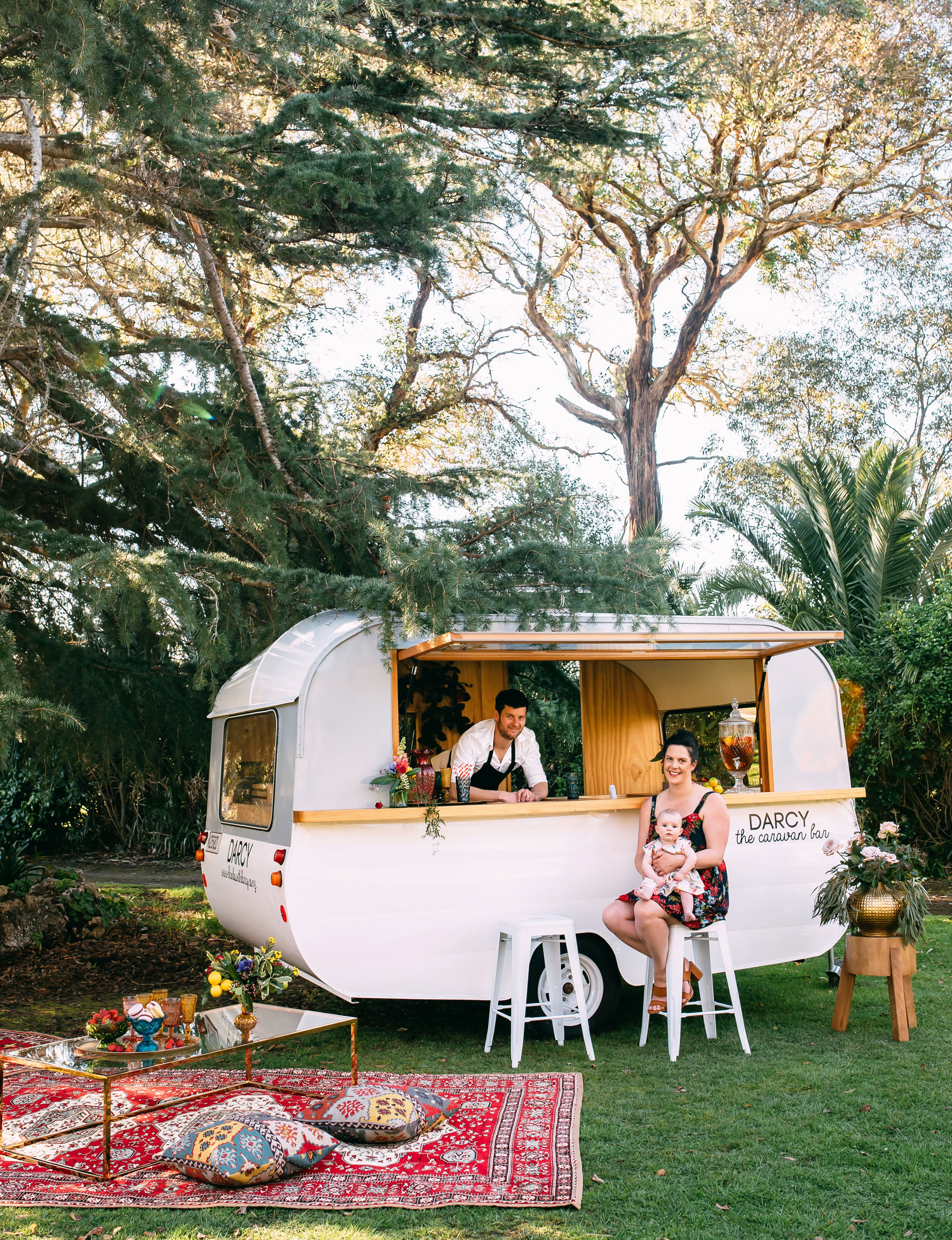
Darcy, the vintage caravan, has given Stacy and Mark Bancroft a new lease on life and outdoor living.
Built in 1969, Darcy the Caravan was lovingly restored in 2015 and has now become quite the socialite, attending weddings, birthdays and many other special celebrations around Hawke’s Bay. Owners Stacey and Mark Bancroft were holidaying in Cambodia when the idea for Darcy was conceived.
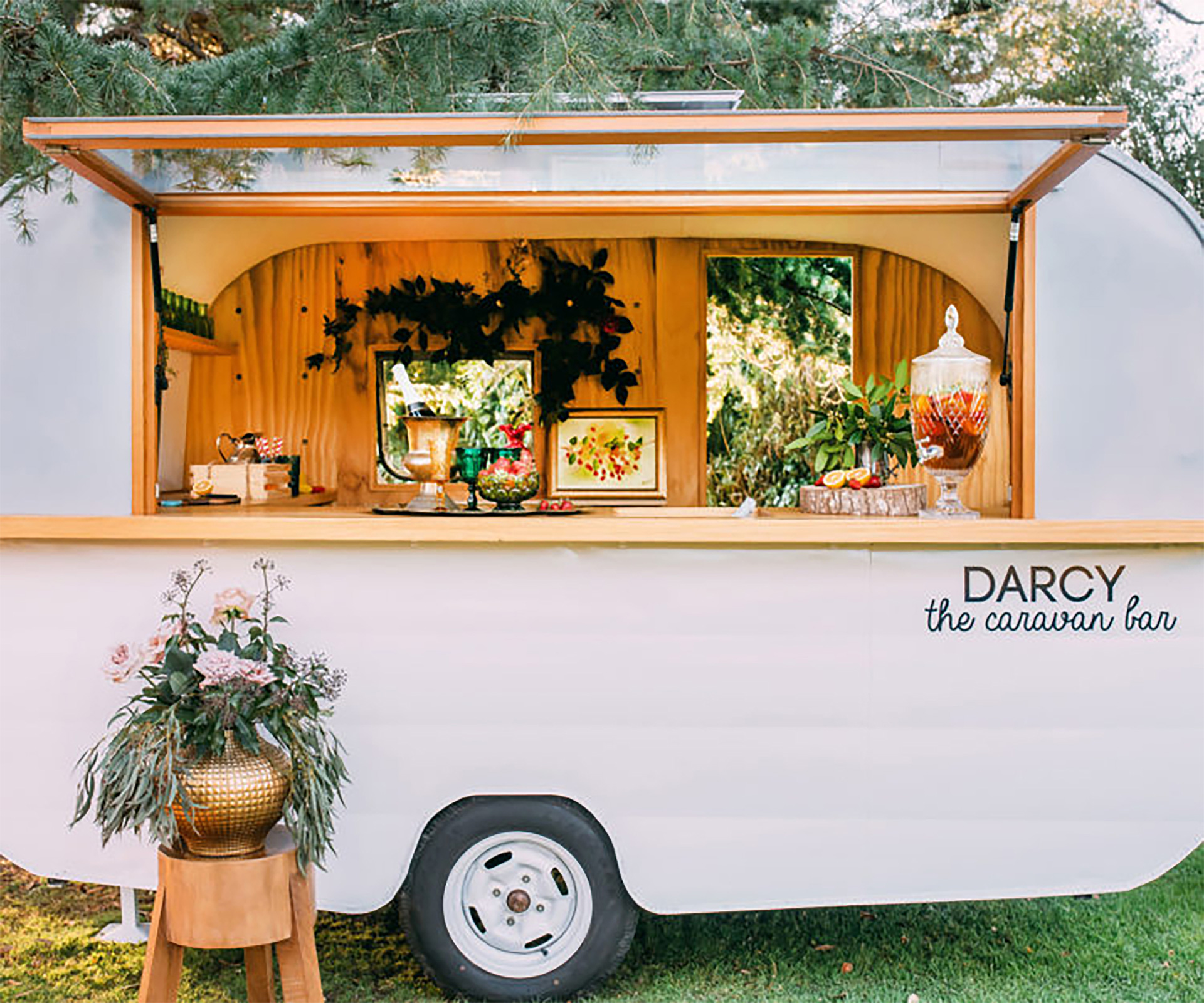
Once the house had been bought, Mark threw himself into their other project – the caravan bar. Plenty of hours trawling Trade Me eventually resulted in success when Darcy was found. Although a little tired, Darcy had loads of potential, so with their dream in sight, Mark and Stacey sacrificed many long weekends to work on him.
Starting from scratch, they gutted the little caravan and slowly rebuilt it. A new floor was put in and they lined the walls in ply themselves, sanding and oiling all the wood. With the help of local business CedarVille Joinery and Building, a long pine bench was added outside – the perfect spot to lean or perch on a bar stool with a drink.
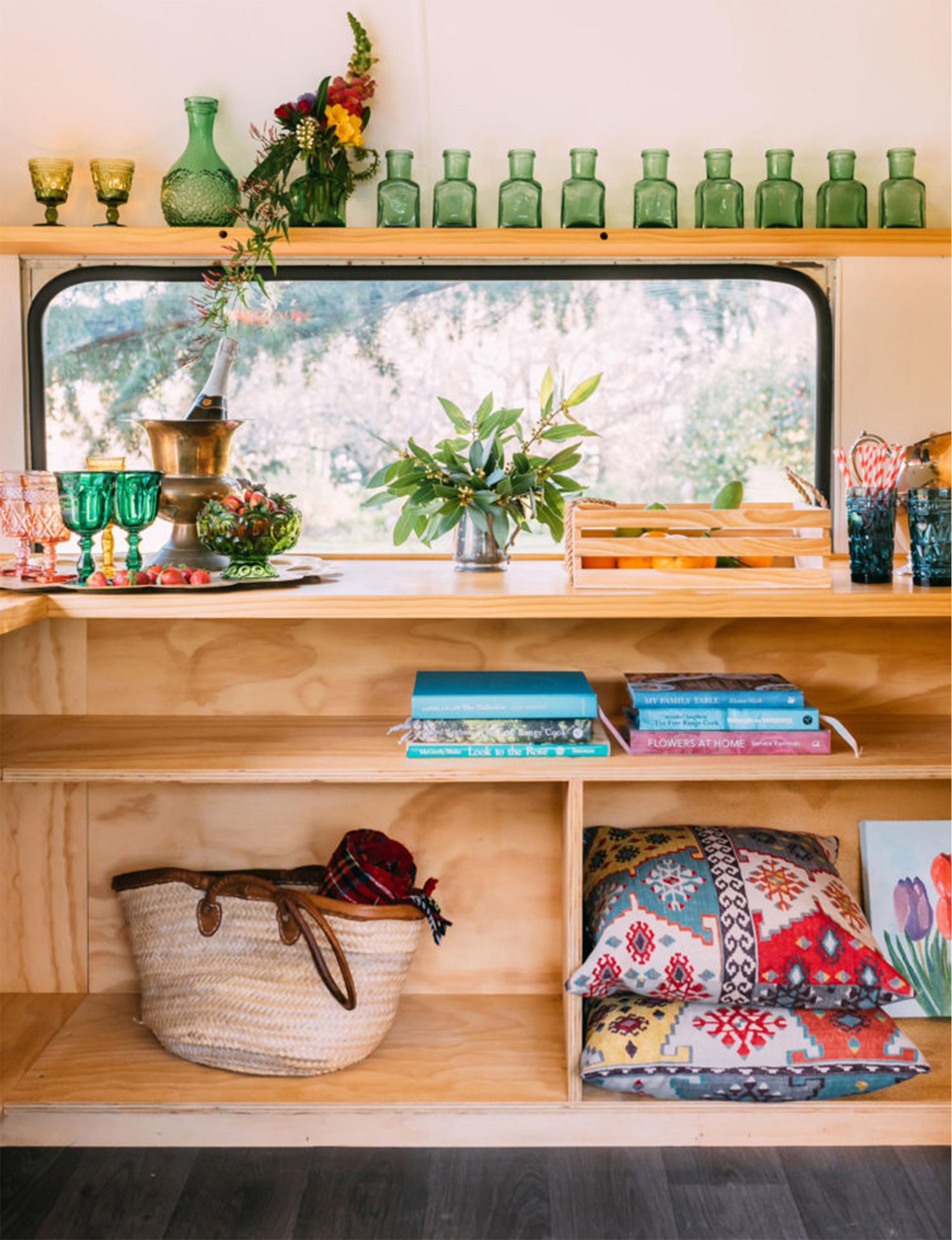
They also built and installed the beautiful cedar servery window with gas struts, allowing the side of the caravan to open up and become a bar.
Stacey and Mark settled on a fresh, bright white when it came time to have Darcy professionally painted. They wanted the caravan to look smart and be able to blend into any surrounding and suit any occasion, vintage or modern, simple or sophisticated, decadent or bohemian, town or country.
5. Roberta
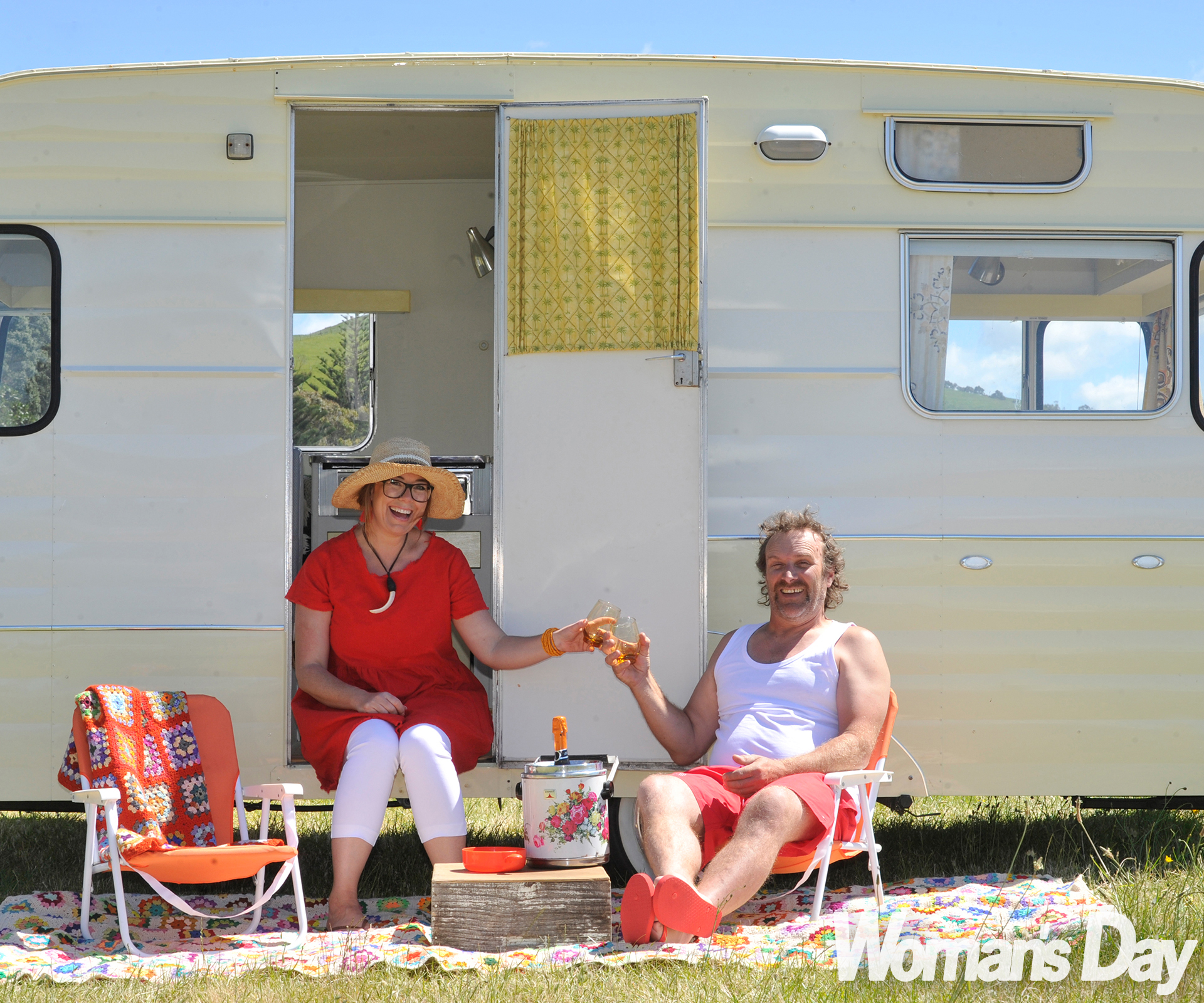
Come summer, the winners of The Block NZ, Amy and Stu will be heading out to an idyllic camping spot to stay in their cute yellow caravan, Roberta
After a relaxing meal with their family in Gisborne, The Block New Zealand winners Amy and Stu head off for their favourite part of Christmas – camping at picturesque Pouawa Beach.
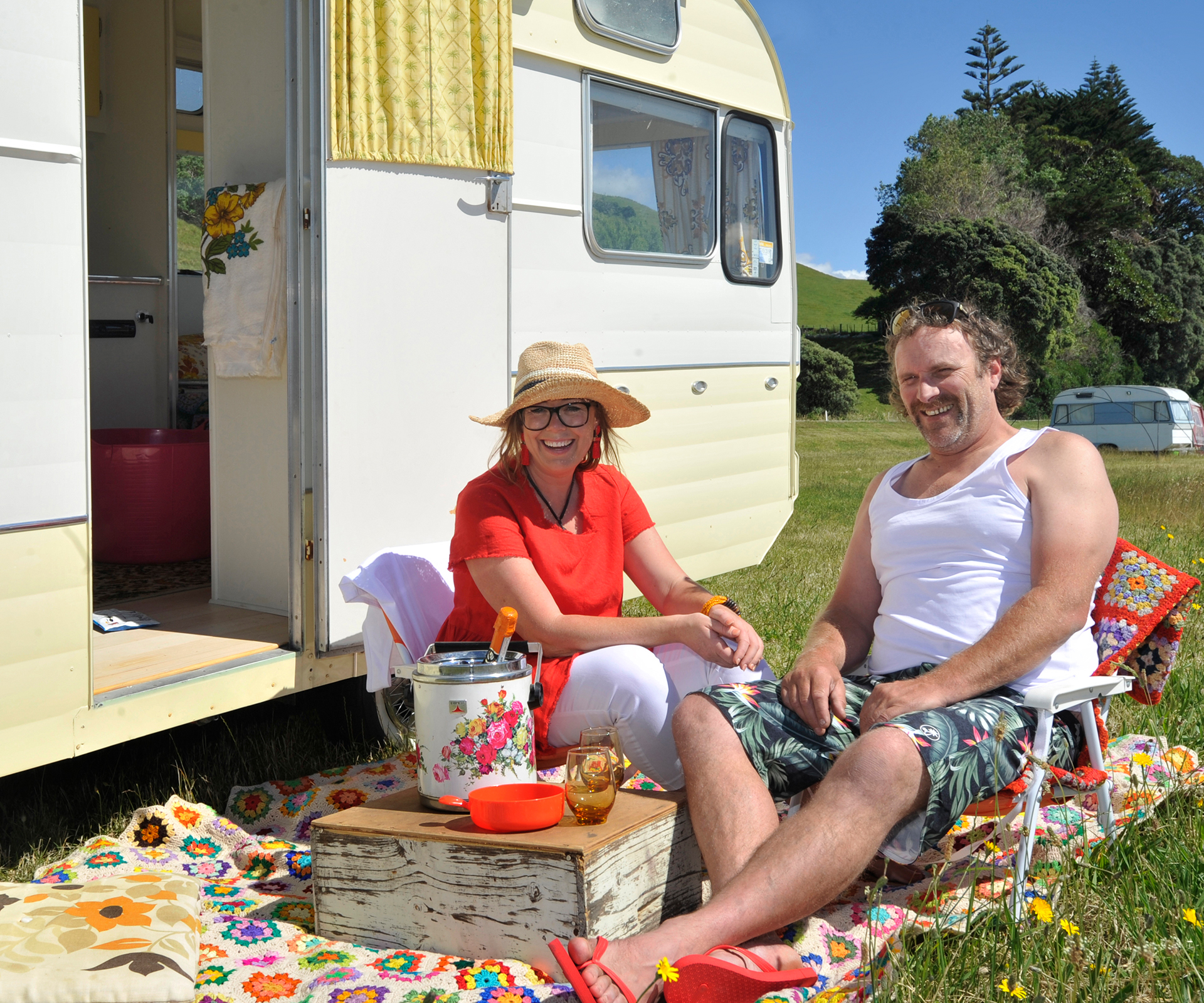
“It’s a classic New Zealand holiday,” says Amy, 39, as she takes Woman’s Day on a tour of their restored 1970s caravan, which she and Stu, 46, have nicknamed Roberta. “Camping was something Stu had always done and when we got together, I thought I wouldn’t like it at all, but I did! It was just such an escape.”
They stay at the caravan on and off for the whole of January, but luckily, home is only a 15-minute drive away from the campsite if they need to pop back.
6. Pastel perfection
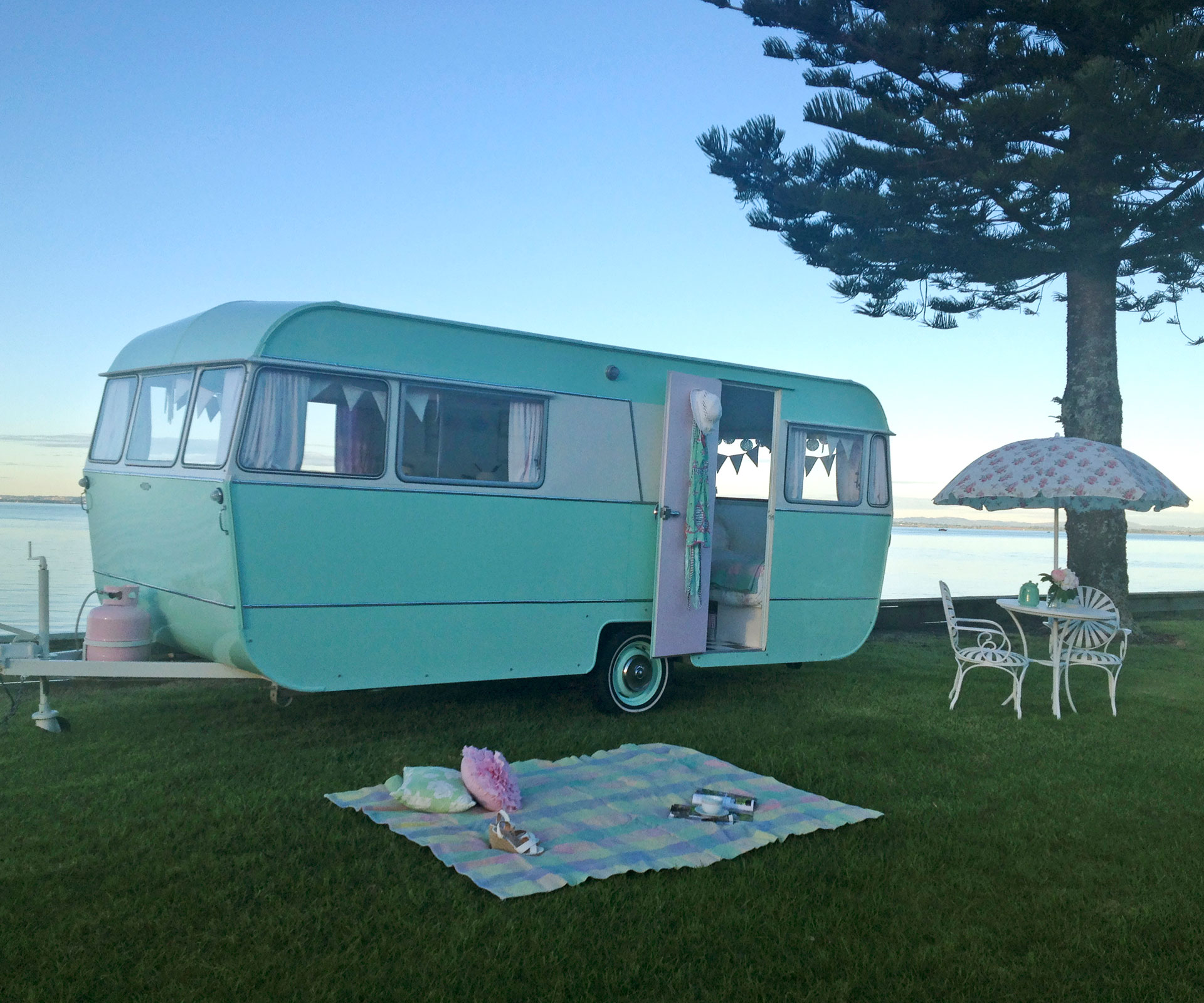
Beth Eagle’s mission is to revive the classic caravans that were built here from the 1950s to the 1980s. “They’re part of our Kiwi heritage,” she says. “I think it’s so worthwhile to give our New Zealand-made caravans the star treatment and get them back on the road with a family to enjoy.”
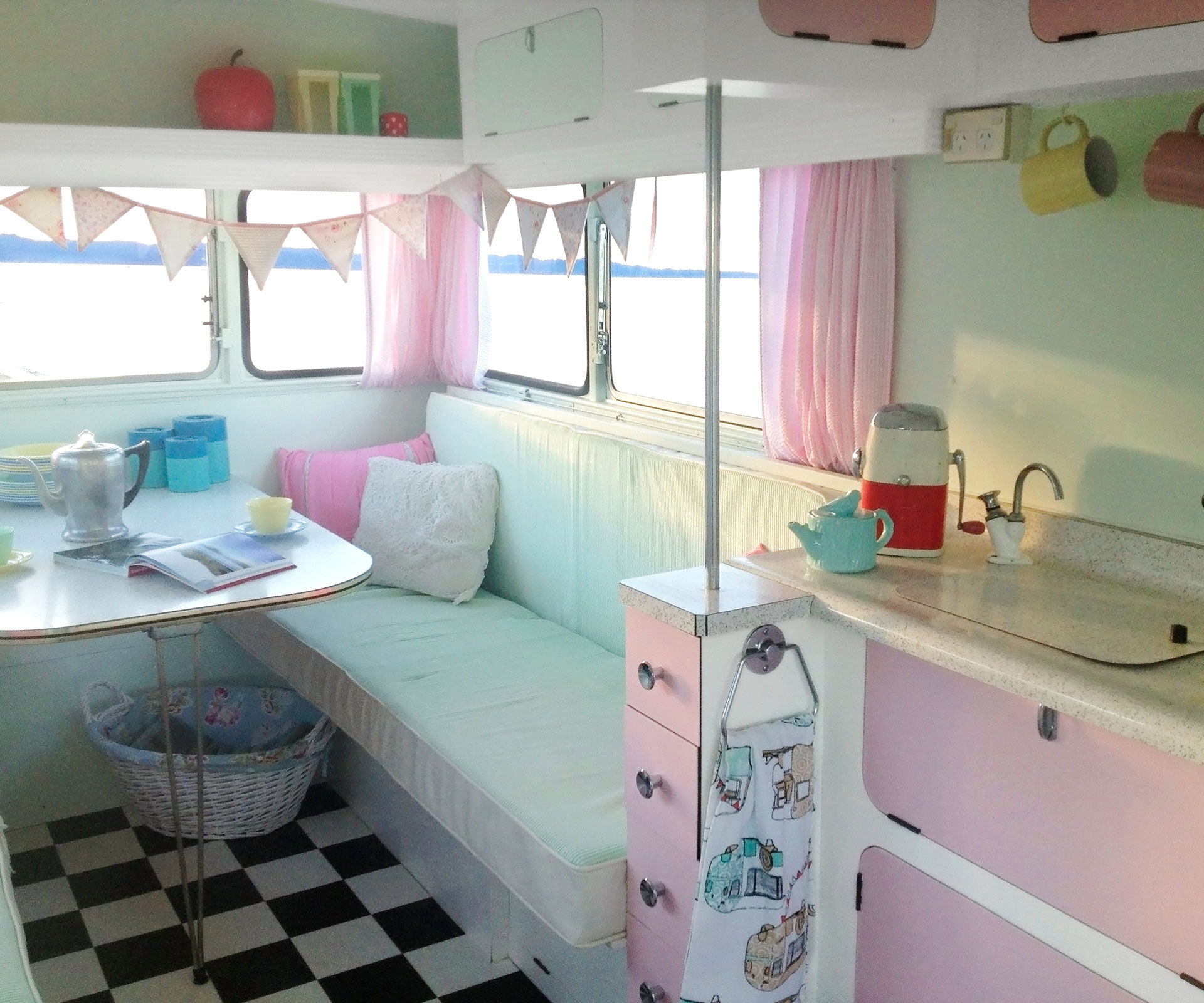
She buys caravans based on their shape and character. “They have all been 1950s to 1970s so far, but if I found a 1980s one that fit the description I wouldn’t discriminate. Caravans seemed to lose their way from the 1980s onwards and many are mass produced, nondescript versions of our iconic Kiwi caravan.”
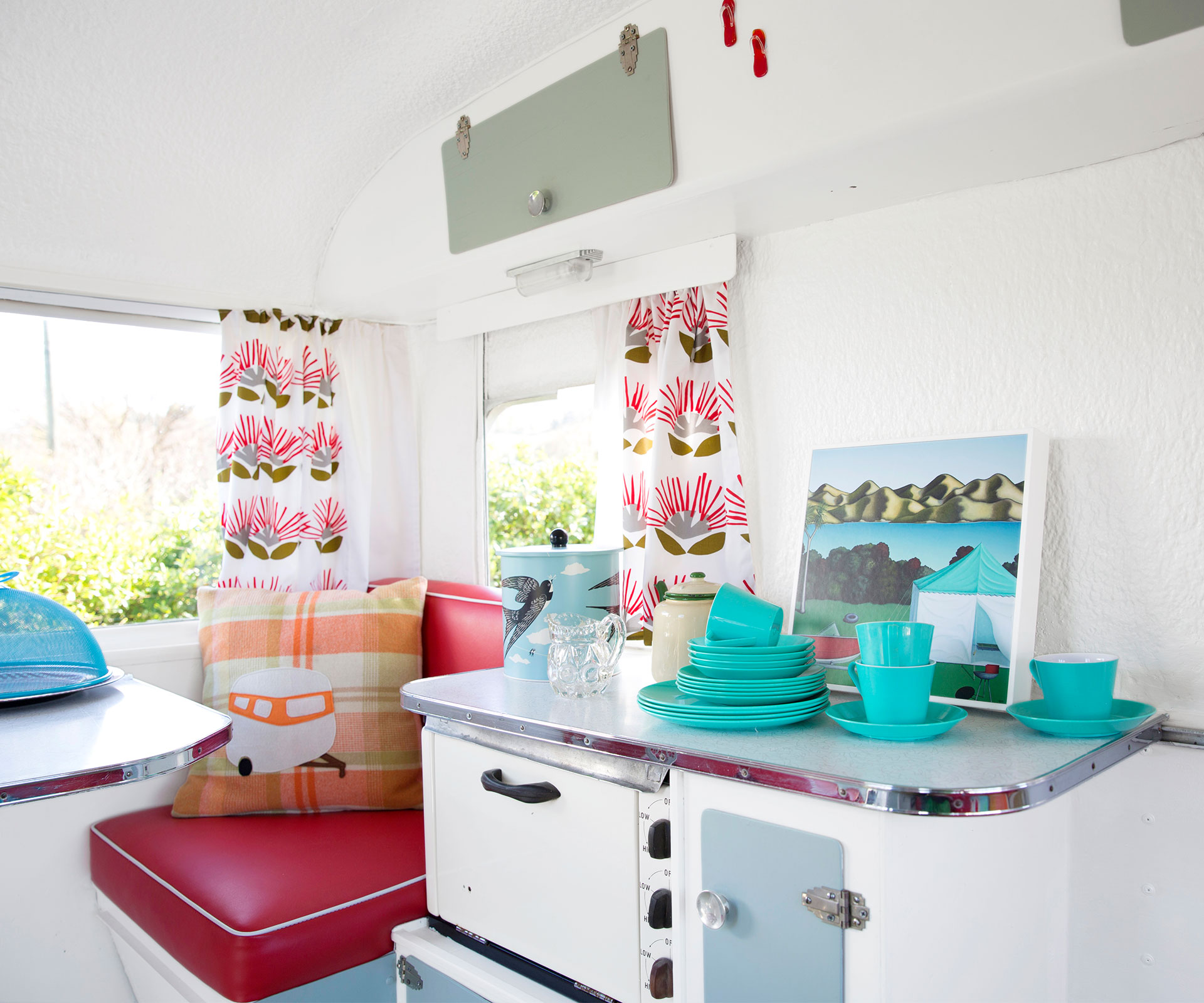
As some parts are “ridiculously difficult” to source she tries to buy caravans with their original interiors largely intact.
With classic caravanning regarded as a cool way to holiday, sourcing them is becoming increasingly difficult. This and the high standard of finish means the refurbished caravans cost between $20,000-30,000 to buy.
EXPERT PROJECTS

Create the home of your dreams with Shop Your Home and Garden
SHOP NOW











